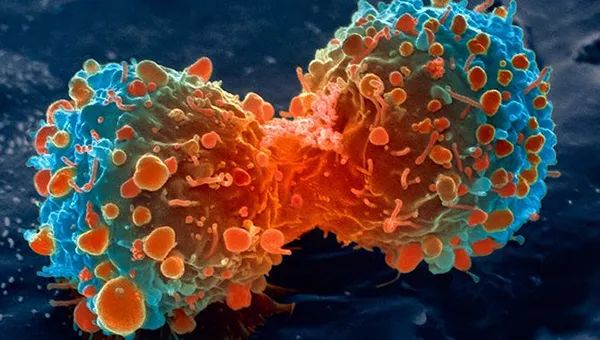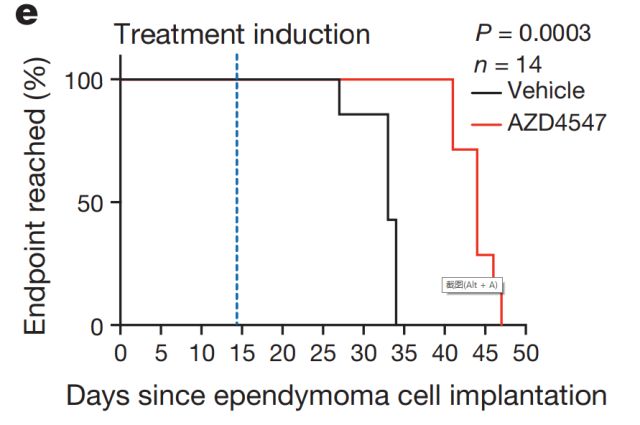Scientists from Germany, the United States and Canada successfully developed a new generation of cancer-targeted treatments based on “super enhancers†January 03, 2018 Source: Singularity original article Sometimes, the advantages that some people are proud of often become fatal, and so are cancer cells. Although genetic mutations can promote cancer cells to immortalize, invade and metastasize, promote angiogenesis, and employ normal cells to work for a range of capabilities; but at the same time, this provides many ideal targets for scientists to develop anticancer drugs. For example, the FDA's 2001 anti-cancer drug Gleevec can increase the five-year survival rate of patients with chronic myeloid leukemia from 31% to nearly 60%. At the same time, Gleevec's side effects are significantly reduced compared to the "killing one thousand self-loss 800" buffs that come with chemotherapy, and many patients can live normally during medication (1). However, unfortunately, not all cancer patients are so lucky to use highly effective and low-toxic targeted drugs. Because, although the development of sequencing technology in recent years has greatly promoted the precise treatment of tumors, for many malignant tumors, scientists have not found a suitable therapeutic target. Recently, a heavy research published in the journal Nature has opened a new direction for cancer-targeted therapy. Researchers from the Hopp Children's Cancer Center (KiTZ) in Heidelberg, Germany, the Cleveland Clinic in Ohio, and the Children's Hospital in Toronto, Canada, have developed a new cancer-targeted treatment program by targeting the “super-enhancer†region of the genome. In the ependymoma, the feasibility of the program was proved, which brought new hope to cancer patients (2). In order to better understand this research, we first need to briefly understand the enhancer and super enhancer. Simply put, an enhancer is a piece of DNA on the genome that interacts with transcription factors to regulate gene expression. For example, an enhancer encoding the upstream of the beta globin gene in HeLa cells can increase the expression of the beta globin gene by a factor of 200 (3). At the same time, according to statistics, there are only 25,000 genes encoding proteins in human cells, and nearly one million enhancers. In other words, the genome of all our human cells is the same, but the shape and function of the cells are different, which is largely determined by the enhancer. On the basis of the enhancer, Professor Richard A. Young proposed the concept of super enhancer in 2013. At the time, when Professor Young studied mouse embryonic stem cells, he unexpectedly discovered that the maintenance of pluripotency of embryonic stem cells was mainly coordinated by a few transcription factors and corresponding enhancers. Compared with common enhancers, these enhancers promote gene expression more strongly, nearly four times that of ordinary enhancers. At the same time, these enhancers are mainly responsible for regulating the expression of genes that determine cell identity, such as oncogenes that determine the identity of cancer cells. (4). Therefore, Professor Young named these enhancers as super enhancers. But what does super-enhancer have to do with cancer? Later, some scholars found that most of the super enhancers are in a state of inhibition in the cells, and only a small number of super enhancers that determine the identity of the cells are opened in different cells. And even if a super-enhancer is turned on in the cell, or the wrong gene is targeted enough to cause tumors (5,6). Not only that, but also found that many of the key oncogenes of tumor cells are driven by super enhancers. At the same time, compared with normal cells, tumor cells actively construct super-enhancers at the oncogene to drive oncogene expression during tumorigenesis (7). Obviously, tumor cells may be more dependent on the activity of super enhancers than individual genes or molecules. This also means that the super enhancer is a more ideal anti-cancer target. To validate the feasibility of targeting super-enhancers to treat cancer, the researchers started the experiment. First, the researchers found 42 patients with various subtypes of ependymoma to follow the strict screening criteria to find a super-enhancer that can be used as a target, and to verify the feasibility of targeting super-enhancers to treat cancer. Sex. Because ependymoma is a drug that is resistant to chemotherapy, there is currently no targeted treatment for malignant brain cancer (8). Combined immunoprecipitation combined with high-throughput sequencing (ChIP-seq), whole exome sequencing (WES), whole genome sequencing (WGS), transcriptome analysis, DNA replication analysis, and DNA methylation data, researchers ultimately Nearly 1,700 cancer cell-dependent super enhancers and associated oncogenes were found in cancer cells from 42 patients. By comparing with the currently known standard super-enhancement sub-databases, the researchers found that these super-enhancers have significant tumor specificity and are primarily activated in tumor cells, some of which are still in other types of cancer. kick in. Subsequently, in order to determine the importance of these super enhancers to cancer cells. The researchers constructed a series of small interfering RNAs that inhibited the function of these super-enhancers one by one, and finally identified the super-enhancers that are most dependent on 15 ependymoma cancer cells, lacking any of these 15 super-enhancers. The viability of cancer cells is reduced by at least 50%. At the same time, 60% of the 1,700 super-enhancers are dependent on cancer cells. This further proves that super enhancers are ideal anti-cancer targets. Finally, by comparing their experimental data with the University of Washington Drug and Gene Interaction Database, the researchers found a small molecule that specifically inhibits the super-enhancer for the key oncogene in ependymoma cells, the CACNA1H gene. Enhancement. At the same time, in mice with ependymoma, the researchers found that this small molecule can prolong the survival of ependymoma mice by 40% and hardly affect normal tissue cell survival. Inhibition of super enhancers can prolong survival of ependymoma mice Obviously, this experiment shows that targeting super enhancers is feasible for the treatment of cancer. As one of the authors of this article, Professor Kristian Pajtler, head of the Hopp Children's Cancer Center (KiTZ) at the NCT in Heidelberg, Germany, said, "We have discovered a new pathway to regulate the development of ependymoma, which is inhibited by the use of specific drugs. We can slow the growth of cancer cells and eventually induce apoptosis in cancer cells (9). This also provides a new treatment for ependymoma and other malignancies that lack good medical treatment. Reference materials: 1. Kantarjian HM, Shah NP, Cortes JE, et al. Dasatinib or imatinib in newly diagnosed chronic-phase chronic myeloid leukemia: 2-year follow-up from a randomized phase 3 trial (DASISION) [J]. Blood, 2012, 119(5): 1123-1129. 2.Mack SC, Pajtler KW, Chavez L, et al. Therapeutic targeting of ependymoma as informed by oncogenic enhancer profiling [J]. Nature, 2017. 3.Banerji J, Rusconi S, Schaffner W. Expression of a β-globin gene is enhanced by remote SV40 DNA sequences[J]. Cell, 1981, 27(2): 299-308. 4.Whyte WA, Orlando DA, Hnisz D, et al. Master transcription factors and mediator establish super-enhancers at key cell identity genes[J]. Cell, 2013, 153(2): 307-319. 5. Dowen JM, Fan ZP, Hnisz D, et al. Control of cell identity genes occurs in insulated neighborhoods in mammalian chromosomes [J]. Cell, 2014, 159(2): 374-387. 6. Gröschel S, Sanders MA, Hoogenboezem R, et al. A single oncogenic enhancer rearrangement causes concomitant EVI1 and GATA2 deregulation in leukemia[J]. Cell, 2014, 157(2): 369-381. 7. Lovén J, Hoke HA, Lin CY, et al. Selective inhibition of tumor oncogenes by disruption of super-enhancers [J]. Cell, 2013, 153(2): 320-334. 8. Pajtler KW, Witt H, Sill M, et al. Molecular classification of ependymal tumors across all CNS compartments, histopathological grades, and age groups[J]. Cancer cell, 2015, 27(5): 728-743. 9.https://
The performance of the Baby Monitor Security Camera
The performance of the baby monitor is reflected by its built-in parameters and function combination. The following shows some properties that a high-quality and applicable baby monitor should have. The requirements for baby monitors in this part apply to all audio/video, digital/analog home baby monitors and wireless baby monitors, and are not changed due to the combination mode of the monitoring end and the control end.
Baby Monitor Security Camera,smart 1080P camera PTZ Baby Monitor,Night Vision Solar Surveillance camera,PTZ rotation,Motion detection Shenzhen Fuvision Electronics Co., Ltd. , https://www.outdoorsolarcameras.com



Low power display: the baby monitor, especially the monitoring terminal, must work continuously for a long time. Once the product is low in power, it cannot remind parents to charge it in time. When the power continues to be consumed until it is exhausted, the control terminal will be unable to continue to receive any signal.
Voice trigger prompt: Voice trigger means that once the monitoring terminal detects the noise caused by the abnormal behavior of infants or children, it will be displayed at the control terminal through the noise prompt lamp.
The transmission signal frequency can be adjusted: the monitoring end of the baby monitor provides audio and video digital signals to the control end by transmitting wireless signals. If the transmission frequency of the monitoring end is not selected properly, it will produce electromagnetic interference with other household appliances, digital equipment, etc., which will affect the normal use of the product. Therefore, it is necessary to select a baby monitor that allows users to adjust the frequency of the transmitted signal at the monitoring end.
Adjustable volume: a friendly baby monitor will provide a volume selection knob or button at the control end. When parents are in an environment with loud background sound, they can hear the activity sound of babies and children by turning up the volume; When it is late at night or in a quiet environment, the low volume will not affect the normal rest of the people around you when you are answering normally.
VOX function: VOX is the abbreviation of sound activation start. The monitor with VOX function is in standby mode under normal conditions, and the screen and horn stop working, thus reducing the energy consumption of the product; Once it is detected that the monitored object has an abnormal sound exceeding the set standard, it will immediately flash its alarm lamp at the control terminal or directly light up the screen, and simultaneously play the audio and video information sent by the monitoring terminal.
Digital signals and analog signals: baby monitors using digital signals, such as Baohushen baby monitors, will have better transmission efficiency and provide users with clearer sound and picture quality; Moreover, digital signals can be encrypted to prevent being intercepted and interpreted by other receivers, effectively protecting users' family privacy; The electromagnetic signal interference of digital signal will be lower than that of analog signal, so as not to affect the normal work of other household appliances and equipment.
Monitoring end extension: The baby monitor with a friendly user experience should allow users to use one control end to manage the activities of several monitoring ends at the same time, especially in some families with multiple children. This good scalability not only reduces the trouble of carrying multiple control ends at the same time, but also reduces the objective additional expenses for these families.
Temperature display: some products will have the function of realizing the current indoor temperature, and even can set a critical value. Once the room temperature exceeds or falls below the critical value, an alarm signal will be sent. This is a very considerate function for temperature sensitive newborn children or sick children.
Intercom function: The high-end baby monitor allows parents to have a direct conversation with the baby (child) at one end of the monitoring end through the control end, so that children who are alone can provide psychological comfort. If children have any temporary needs or words, they can be known without bothering the guardian to run to the child.
Signal range: theoretically, the signal sent by the monitoring terminal can be received by the remote control terminal, which is more convenient for users to use the baby monitor flexibly. Now more and more families live in large family rooms, even multi-storey villas, and the baby monitor with strong signal receiving ability provides these families with a more convenient way of use. Parents no longer need to set the room beside the children in order to see and hear their children's every move. They can even take the control terminal to go out for a short walk!
Power supply mode: The baby monitor with built-in battery can automatically switch to the battery power supply mode when the external AC power supply is suddenly stopped, so that the user will not be affected to continue to monitor the child in the power failure environment.